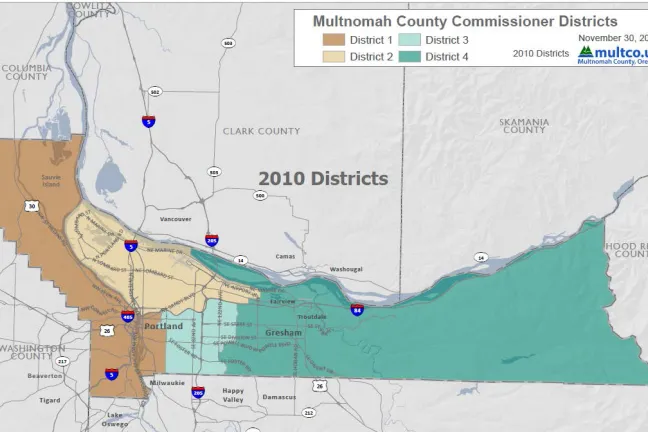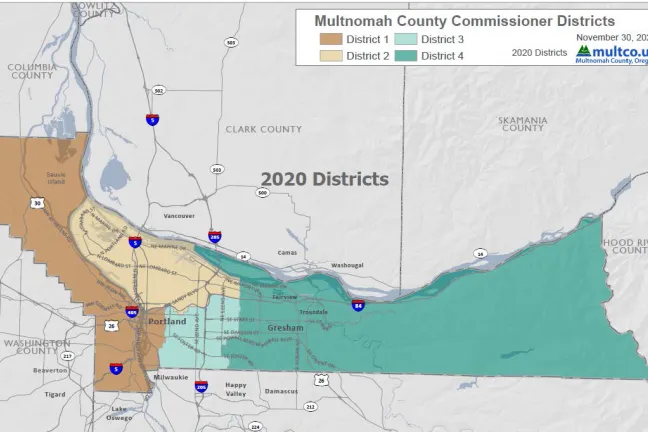Multnomah County Commissioners are considering the adoption of new boundaries for County Commission districts as part of an update following the 2020 Census. Multnomah County Auditor Jennifer McGuirk reported the new redistricting map at the board meeting on Thursday, Dec.16, 2021.
“This assessment process ensures that each person in our county receives fair, equal representation,” said McGuirk, who spoke about the redrawing of the established County Commissioner district boundaries.
The second reading is scheduled on Thursday, Jan. 6, 2022 and the new districts will go into effect 30 days after that.
Redistricting is completed every 10 years following a U.S. Census count, and is redrawn any time the population of one district is greater than 103% of the population of any other district.
McGuirk found that the 2020 Census showed District 1 as being almost 9% larger than the smallest district. There was also a population growth in District 2, which required the Auditor to redraw the districts. The Auditor’s Office was required to follow redistricting requirements set by the County Charter, with direction from the Oregon Secretary of State and the U.S.Voting Rights Act.
As a result, District 3 and 4 needed to be increased in size while still maintaining the geographical characteristics of the current districts. The new redistricting map showed the district boundaries shifted west.
The proposed change leaves District 3, the largest of the proposed districts, less than 1% larger than the smallest proposed district, District 1.
The Auditor’s Office said they used a two-step community engagement process before presenting the proposed redistricting map. The first step was to communicate and provide information to the community via social media and their monthly newsletter. Outreach was conducted by email and in person to community groups which included Black, Indigenous, and other communities of color.
McGuirk said their office received a variety of comments and looked for common themes.
“The majority of the comments we received were about keeping areas together, such as keeping a neighborhood fully in one district,” said McGuirk.
The second step in engaging the community required the Auditor’s Office to publish a draft map that allowed for community review. Feedback forms were made available online in English, Russian, Somali, Simplified Chinese, Spanish and Vietnamese. Hard copies were also available at all library branches.
“I just wanted to appreciate the work and the outreach with the community that you all have done. You make it look easy,” said Commissioner Lori Stegmann about the Auditor’s Office.
Both Chair Deborah Kafoury and Commissioner Vega Pederson encouraged the public to look at the proposed redistricting map and Commissioner Vega Pederson added, “I would like to say welcome to all of the people that will be moving into District 3.”

